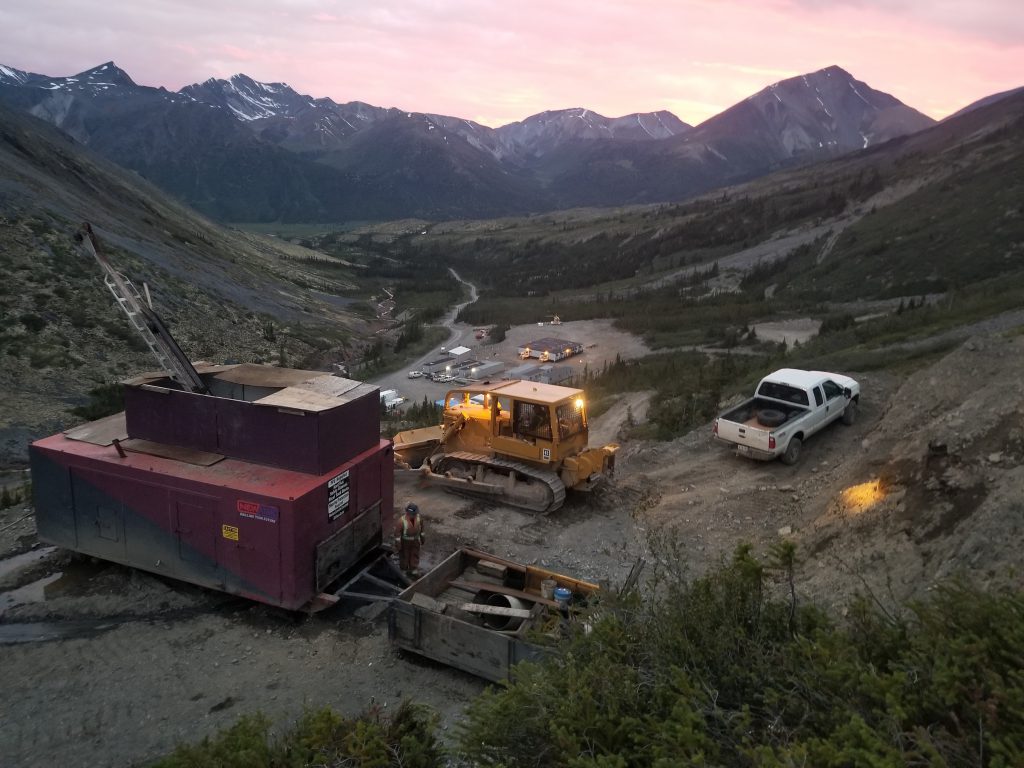Fireweed Metals drills 11.45% zinc over 14 metres at Macmillan Pass, Yukon

Fireweed Metals Corp. [TSXV-FWZ; OTC-FWEDF; FSE-M0G] reported the final results from the 2023 drilling campaign at its Tom and Jason deposits, Macmillan Pass (Macpass) project, Yukon Territory, Canada.
Highlights: Hole TS23-009 intersected 17.95 metres (estimated 14 m true width) of 11.45% zinc, 5.86% lead and 126.3 g/t silver, including 6.6 metres of 19.33% zinc, 8.42% lead and 225.1 g/t silver.
Hole TS23-009D2 intersected 18.78 metres (estimated 9.8 m true width) of 9.82% zinc, 11.65% lead and 180.1 g/t silver, including 11.75 metres of 11.93% zinc, 16.17% lead and 260.5 g/t silver.
Both TS23-009 and TS23-009D2 intersected the new Tom South zone, which was not in the 2018 mineral resource. There is substantial potential in this zone beyond what was intersected this year. Drill results are now fully disclosed for the 2023 drilling campaign at Macpass.
Brandon Macdonald, CEO, stated: “The intersection of continuous high-grade feeder-style mineralization at Tom South is arguably one of the most significant discoveries at this deposit in decades and is a greater-than-100-metre step-out beyond the known Tom resource. These intercepts provide a tantalizing glimpse that Tom Southeast and Tom West may form a continuous zone of stratiform and massive sulphide mineralization connected around a fold hinge at Tom South. We are excited at the prospect of exploring this concept in 2024 and are reminded that despite generations of work, the Tom and Jason deposits may still have surprises in store for us.”
Mineralization from drill holes in this release primarily comprise stratiform (layer-parallel) and massive (greater than 50% sulphides) sulphides in Tom West, Tom South and Jason South. At Tom West and Tom South this mineralization forms a continuous steeply-dipping domain with sharp margins, occurring from surface to at least a depth of 750 metres and across a strike length of 1,500 metres.
At Jason South, mineralization occurs as a series of steeply dipping stratiform lenses from 250 metres below surface to a depth of at least 730 m and a strike length of 450 metres. The intersections in holes TS23-009, TS23-009D1 and TS23-009D2 represent a significant 100 metre step-out from mineralization included in the current Tom resource and comprise high-grade massive sulphides associated with feeder-style mineralization.
Drill holes in this release are located at Tom West, Tom South and Jason South and targeted stratiform and massive sulphides with a focus on step-outs from the current mineral resource that was last updated in 2018. Holes TS23-009, TS23-009D1 and TS23-009D2 stepped out from an isolated intersection in historical hole TS90-012 which was not included in the 2018 resource. All three holes intersected high-grade stratiform and massive sulphides, which support the idea there is a continuous domain of mineralization outside of the 2018 resource that remains open along strike. Holes TS23-001 to TS23-008 intersected stratiform zinc mineralization, successfully stepping out down dip and northwest from the known mineral resource at Tom West.
Fireweed conducted a short prospecting program at Macpass in 2023, focusing around geochemical and geophysical anomalies that could be related to reduced intrusion-related gold systems. Prospecting crews took 535 rock samples, with gold grades between one and 3,121 parts per billion (ppb) gold.
Evidence of arsenic-bismuth-bearing approximate northwest-southeast-trending and northeast-dipping veins with generally low and spotty gold values was located within hornfels rock at the newly defined Neptune showing, interpreted as distal alteration around a Mid-Cretaceous buried reduced intrusion. The depth to the hypothesized intrusion cannot be accurately estimated with the current observations and more work is required to accurately assess the potential at Neptune.
Fireweed intends to continue prospecting in the upcoming 2024 field season, with an emphasis on following up anomalies in a commodity agnostic manner, using a data-driven approach. Fireweed owns almost 1,000 km2 of mineral tenure within the Selwyn basin, one of the world’s most significant basins for zinc mineralization, where Fireweed sees great potential for additional zinc discoveries. Fireweed’s ground is also within the Mayo-Tombstone-Tungsten belt of intrusive rocks that, on Fireweed’s claims, host the world’s largest high-grade tungsten deposit, Mactung, and off Fireweed’s claims, also includes the past-producing Cantung tungsten mine, and emerging gold discoveries.
